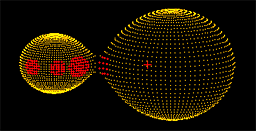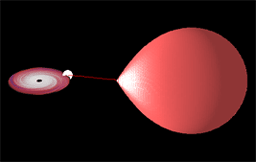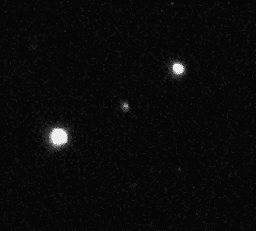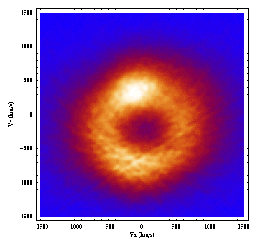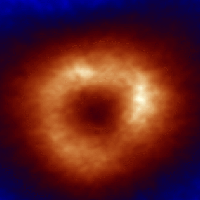
The Home Page of Jeff Bryant |
Waylena McCully, Cataclysmic Variable Stars, Vistapro space-art, and fossil collecting. |
My Other Pages
New Items
My Family & Background |
|||||||||
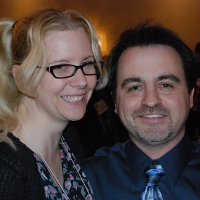 Me And Waylena |
 Our Cat, Remington |
||||||||
 Our Cat, Carmen |
 Our Cat, Kaitlyn |
||||||||
|
I was born in Anderson, Indiana on July 16th, 1973. This is an interesting day as the 16th of July is the day that Apollo 11 was launched, and is also the day that the first fragment of comet Shoemaker-Levy 9 hit the planet Jupiter. Who says my birth wasn't in the stars? I attended Leach Elementary School from 1978 to 1987, this may seem long, but at the time, the jr. high shool was combined with the elementary school. In 1988 I began attending Frankton High School, from which I graduated in 1991. My next step was Ball State University, where I explored my interest in physics and especially astronomy to a great degree. During this time I was able to participate in a research program funded in part by NURO (National Undergraduate Research Observatory). This research centered around the search for late M-class dwarf stars in order to eventually count the number of such stars in an attempt to explain dark matter. I also gained experience in tutoring and grading for numerous classes at the introductory level. Throughout my undergraduate years I was also employed by Marsh Supermarkets for a period of nearly seven years, five of which were spent in the meat department as an apprentice meat cutter. In May 1996, I received my B.S. in physics, with minors in astronomy and math. I also received my M.S. degree in July of 1998, also in physics. As part of my graduate work I was involved with the construction of a stellar model for a binary star known as AK Herculis and the study of IP Peg, more on these below. I am currently employed at Wolfram Research, Inc. - the makers of Mathematica.
My current life is marked most importantly
by the fact that on August 16th, 2003, I married my beautiful
wife: My InterestsMy first interest was in paleontology, shortly followed by a strong interest in astronomy. I also have strong interests in computers, astrophotography, and bicycling. My favorite books belong to the Necroscope series (13 books), by Brian Lumley, to which I am strongly addicted to. Click on the link under My Links to see more about these books, or visit Brian Lumley's website at http://www.brianlumley.com/. I have been priviledged to have access to the Ball State University's Photometrics Star I CCD camera with which I have taken many pictures of the night sky. I also took some pictures of the recent comet Hale-Bopp with my Pentax K-1000. I used a 50 mm lens at f/1.7 along with 1000 ASA Kodak Gold film. The pictures were taken on March 10, 1997 at about 10:45 U.T. Click on the appropriate sidebar buttons to view the pictures. On January 1, 2002, I was elected the president of the Champaign-Urbana Astronomical Society (CUAS). I decided to take a break in January 2005 and am currently the 5th director. We are a very active organization committed to educating ourselves and the public about astronomy. To find out more about CUAS, visit our website by clicking on the CUAS link under My Links. All of my research that follows were projects suggested by Dr. Ronald Kaitchuck at Ball State University. He has done extensive research in Algol type eclipsing star systems and in cataclysmic variable star systems. He can be reached by the following E-mail address: I also have a minor hobbist interest in rendering 3D landscapes, primarily space-related scenes. I use a program called Vistapro to do the renderings and use Photoshop in some rare cases to add lighting effects. It was my Vistapro renderings that led to my introduction to my wife. She is the planetarium show producer at the Staerkel Planetarium at Parkland College in Champaign, IL and she did this kind of rendering in a program called Blender. After my demo at an astro club meeting that she happened to be present at, we talked for some time about the topic and the rest was destiny. I owe my marriage to Vistapro. Project: AK Herculis (AK Her)
Project: IP Pegasi (IP Peg)
A trailed spectrogram of the hydrogen beta emission lines in 1985 is shown below. Spectrograms are necessary in the construction of Doppler Tomograms which (shown below the spectrogram) allow one to visualize the star system in velocity space.
Project: UU Aquarii (UU Aqr)The following link is to an AVI movie constructed from image frames taken of another eclipsing cataclysmic variable star known as UU Aqr. Send my e-mail to: jeffb@wolfram.com |
|||||||||
